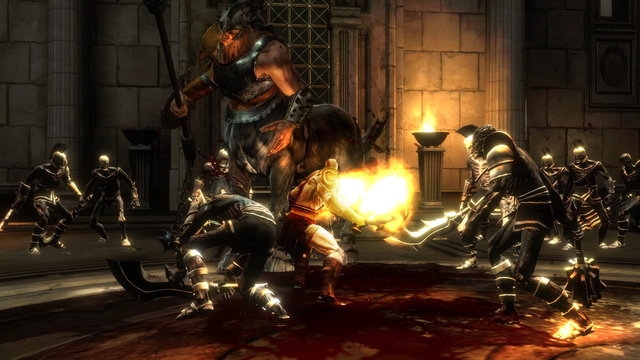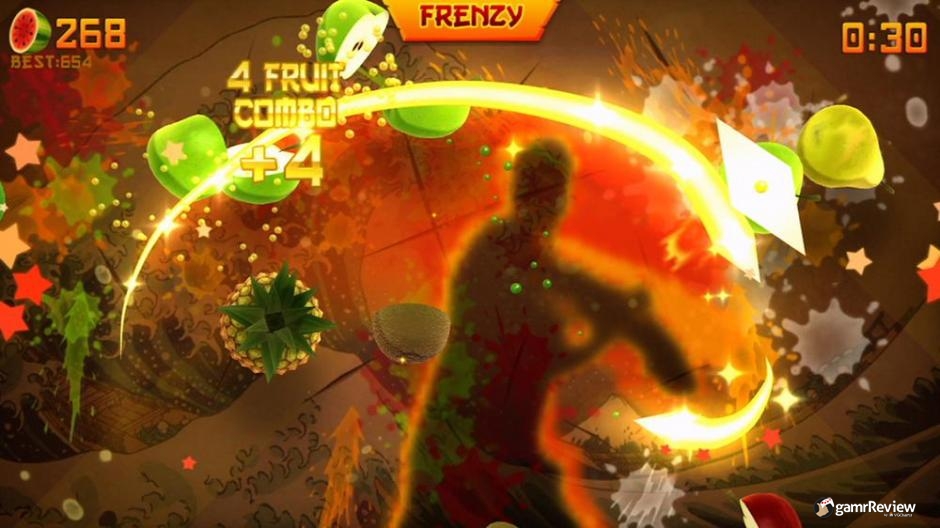
What Kinect Offers the Core - Article
by VGChartz Staff , posted on 20 March 2012 / 4,602 ViewsMotion controls have been a divisive subject for gamers ever since the launch of the Wii. Since then, Kinect has only fuelled that fire. And while the Wii has since proven its worth to fans, Microsoft has been struggling to create convincing arguments for core gamers to like Kinect. This article is aimed at showing that Kinect can not only be a good home for core games, but it can enhance aspects of them too.
Let's first define who a core gamer is in this context. Roughly speaking, they are people who wish to play games with a level of depth that allows for a personalized experience, whether through skill or choice. Examples of such games could be a game that allows a skilled player to play better than a less skilled player, or a game that allows the player to personalize their experience through the choices they make.

Skill and choice in the flesh
But that isn't something that can't be done with Kinect, so why are many core gamers sceptic about it? Based on my observations, many of the reasons for this are based around two big misconceptions about what Kinect can, will, and should do, and I want to clear those up before we move on.
Misconception #1: Kinect is an attempt to replace physical controllers.
Every controller has its strengths and weaknesses. Traditional dual analogue controllers put a range of options at your finger tips, but it's not widely regarded as the best option for camera control in a first person shooter, for example. Kinect, on the other hand, is very good for mapping in-game actions to real world equivalents, but it's limited by the player's stamina and physical environments, for example. As such, Kinect is simply bound to different limitations than other controllers are. And for some games, those limitations are deal breakers, and it would never make sense to have that game on Kinect.
As an example, imagine an action game like God of War or Devil May Cry, where you must be ready to respond to enemy attacks in the blink of an eye. With a physical controller, pressing a button or pushing an analogue stick is quick and responsive, but on Kinect, going from an attacking motion to a defending motion will take too long considering the speed these games are playing at. Whether Kinect will stick around is one thing, but it won't be able to replace physical controllers as we know them even if it does.

"Okay, now I just need to roll backwards..."
Misconception #2: Kinect doesn't have the precision to be usable in core games.
Anyone who has played a Kinect game will undoubtedly have experienced some movements being misinterpreted by the game. The fault might lie with the hardware, though a more likely reason for the fault could rest with the game itself.
As an example, look at the way people move. There are a 1,001 different ways of making similar movements, and the developers might very well have missed a few, or they may simply not have explained the requirements clearly enough to the player, so the player may have misunderstood what he/she was supposed to do. In short, elements of game design that are easy to factor in when the player will just be pressing buttons become significantly more complicated to deal with when you throw in motion controls.
That doesn't mean Kinect is perfect, of course; it clearly isn't as precise as an analogue stick or a mouse. However, this can be rectified with future hardware and technological advances. For now, it just means that developers need to be careful about being overly ambitious with their Kinect interactions, and should instead make sure the interactions they do include are as polished as they can be.

On the cutting edge of fruit-slicing technology
There are undoubtedly other reasons behind the Kinect scepticism. Some people use games to relax, and jumping around in front of the TV doesn't really fit well with that. Others simply don't like motion controls, and both of these are fair reasons to be sceptical. I'm personally excited about the future of Kinect, so I do hope I can convince people who feel this way to give it a shot anyway.
So, how can Kinect enhance core games? And no, this won't be about voice commands; there are other, more compelling cases for what Kinect can do, the biggest of which is perhaps immersion.
Take PowerUp Heroes as an example. It's a short and flawed fighting game, but you'll still be waving your arms, doing the best fighter impression you can while you're playing. Once you learn what the motions you're supposed to perform actually represent, you'll be feeling like the biggest (imaginary) badass as you throw fireballs, create black holes and an array of other stuff. And the mechanics are solid too, giving a more skilled player the chance to beat those less skilled, as you interrupt super attacks, block melee encounters and create attack chains. The game is still far from as accomplished a fighter as Street Fighter or Tekken, but as a proof of concept for fighting games on Kinect, it works wonderfully.

Ka-me-ha-me...
Fighting games aren't necessarily the most demanding of core games though, and the biggest issue for many with Kinect has been movement and whether Kinect can handle full 3D movement adequately. The obvious solution is to sidestep the issue completely and create a hybrid game where a traditional controller is used for controlling movement, like Steel Battalion: Heavy Armor looks set to do. That doesn't mean full 3D navigation with Kinect can't be done, however.
Look at Haunt, for example. Haunt is a haunted house XBLA game that has the player walking on the spot and holding an imaginary flashlight that can be pointed to either side of the screen to turn (like most first person shooters for the Wii or the Move, basically), and it actually works quite well. But what makes Haunt really special is the way it engages the player in the story. Full body motion control is used well and heightens immersion, but the developers have also used several tricks with Kinect to show that its you doing these things. You're not controlling some character in the game, it's you walking around this mansion solving puzzles, which again heightens immersion and also creates a unique interactivity with the game.
But what about combat? Melee combat seems like a no-brainer, and a game like Rise of Nightmares makes the case that it can be done well too. That game had its fair share of faults, but it would happily throw a bunch of zombies in your face, hand you a meat hammer and tell you to get crackin'. And breaking zombie faces has rarely been this visceral.

Every day I'm hammering...
But melee combat is a natural fit for Kinect, so what about something like shooting? This is where it starts to get tricky, and again, a solution is to go hybrid and use a traditional controller for the shooting. What we've learned so far, though, is that Kinect can at least handle on-rail shooters, as proven by Child of Eden and The Gunstringer, but whether Kinect handle shooters with free movement remains an open question - so far we only have a few tech demos and a minor mode in Ghost Recon Future Soldier to guide us on progress in relation to that.
All of this highlights the current state of Kinect gaming well enough. Developers are experimenting and trying their hands at different gameplay options, but the risk involved also means that good core games are hard to come by for Kinect right now. So despite my praise for the games above, you shouldn't go out and buy a Kinect just to play core games right now, because you will certainly be disappointed. If you're a sceptic of Kinect, though, I urge you to give it a chance in the future, because it has the potential be home to great core games, and the games I mentioned above are just some of the titles that are closing the gap.






















 Essay Pro
Essay Pro